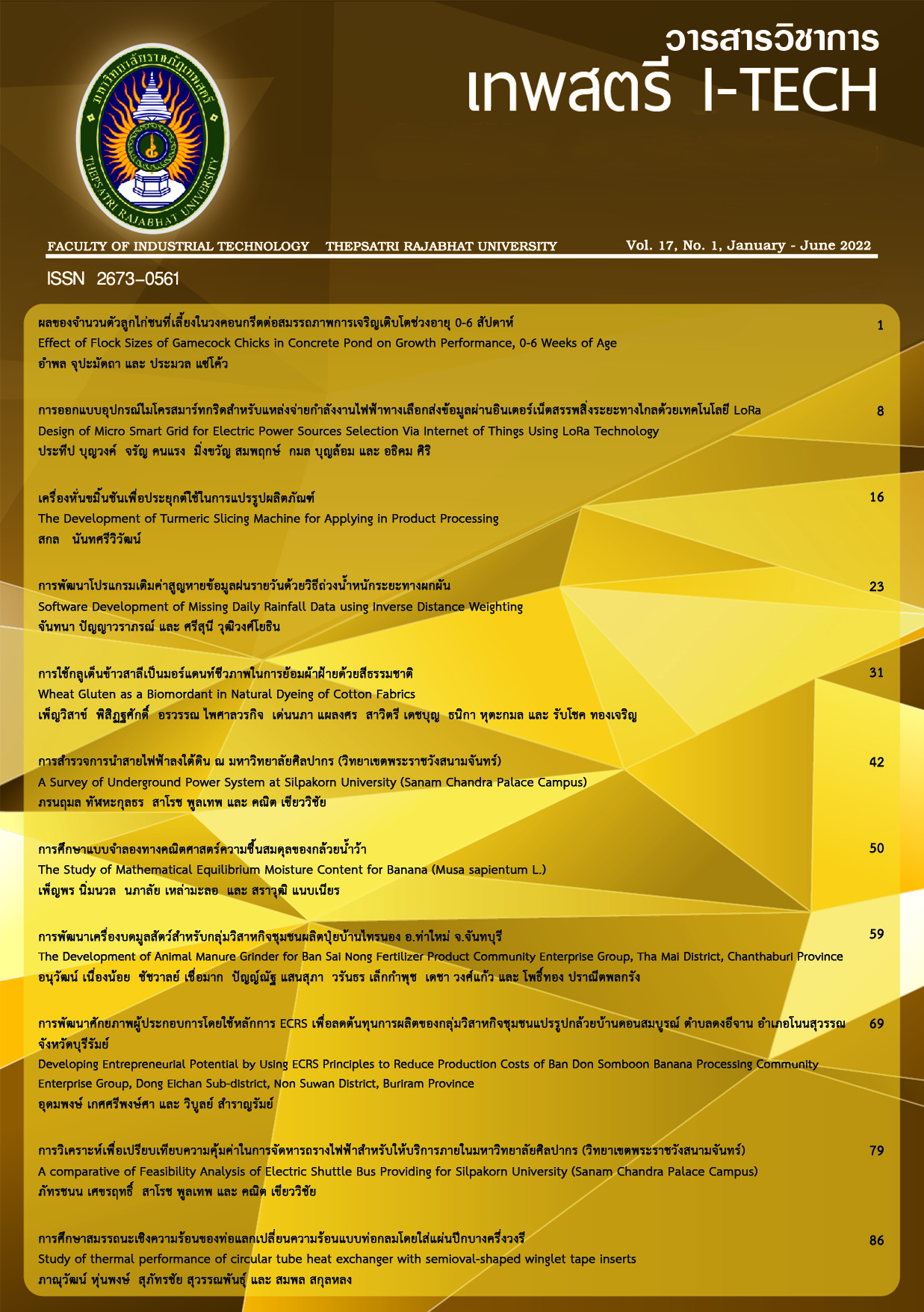การวิเคราะห์เพื่อเปรียบเทียบความคุ้มค่าในการจัดหารถรางไฟฟ้าสำหรับให้บริการภายในมหาวิทยาลัยศิลปากร (วิทยาเขตพระราชวังสนามจันทร์)
Abstract
บทความนี้เป็นการศึกษาความเป็นไปได้ในการจัดหารถรางไฟฟ้า (EV shuttle bus) ขนาด 14 ที่นั่ง สำหรับให้บริการภายในมหาวิทยาลัยศิลปากร วิทยาเขตพระราชวังสนามจันทร์ โดยวิเคราะห์ข้อมูลจากบริษัทที่จัดจำหน่ายรถรางไฟฟ้าภายในประเทศทั้งหมด 5 บริษัท ได้แก่บริษัท A, B, C, D และ E ตามลำดับ เครื่องมือวิเคราะห์ทางการเงินพื้นฐาน (Fundamental of economic tools) ได้แก่ มูลค่าปัจจุบันสุทธิ (Net present value: NPV), อัตราผลตอบแทนภายใน (Internal rate of return: IRR), อัตราส่วนผลตอบแทนต่อต้นทุน (Benefit-cost ratio: BCR), ระยะเวลาคืนทุนคิดลด (Discounted payback period: DPB) และค่าใช้จ่ายตลอดอายุโครงการ (Life-cycle cost: LCC) ถูกนำมาใช้เป็นเครื่องมือในการวิเคราะห์ข้อมูล ซึ่งผลการวิเคราะห์ข้อมูลพบว่าบริษัท B จำกัด มีความคุ้มค่าในการลงทุนมากที่สุด โดยมีค่า NPV, IRR, BCR, DPB และ LCC ผลลัพธ์เท่ากับ 265,844.42 บาท, 53.843%, 1.15 เท่า, 2.5 ปี และ 1,821,963.09 บาท ขณะที่การวิเคราะห์ความอ่อนไหว เมื่อเพิ่มค่าโดยสารเท่ากับ 3 บาท ส่งผลให้บริษัท C จำกัด มีค่า NPV ที่มากขึ้น ทำให้โครงการมีความคุ้มค่าในการลงทุนมากยิ่งขึ้น
References
Y. Wang, “The development and usage of NPV and IRR and their comparison,” Proceedings of the 2021 3rd International Conference on Economic Management and Cultural Industry, 2021 ,pp. 2044 – 2048.
X. Kong, M. Li, T. Tang, K. Tian, L. Moreira-Matias and F. Xia, "Shared Subway Shuttle Bus Route Planning Based on Transport Data Analytics," in IEEE Transactions on Automation Science and Engineering, vol. 15, no. 4, pp. 1507-1520, Oct. 2018.
N. Dawcharoen, N. Pinij, S. Pullteap, “Feasibility Analysis of an Automatic Mechanical Spray Arm Development for Orchid Farm,” International Journal of Applied Computer Technology and Information Systems, vol. 8, no. 1, 2018.
S. Pullteap, P. Samartkit, , K. Kheovichai, H. C. Seat, “A software development for investment analysis LED lightning production project using fuzzy logic technique,” Science Engineering and Health Studies, pp. 83 – 100, 2020.
S. Pullteap, and P. Samartkit, “A design of decision making- assisted software using fuzzy logic technique: a case study of solar cell investment project,” Electrical Engineering, pp. 213 – 223, 2019.
Y. J. Jang, E. S. Suh and J. W. Kim, "System Architecture and Mathematical Models of Electric Transit Bus System Utilizing Wireless Power Transfer Technology," IEEE Systems Journal, vol. 10, no. 2, pp. 495-506, June 2016.
S. Behringer, “The development of the Net Present Value (NPV) rule – Religious prohibitions and its evolution,” Review of Economics & Finance, vol. 6, pp. 74 – 87, 2016.
A. Ahuja, Managerial Economics (Analysis of Managerial Decision Making) (9th edition). S Chand Limited, 2017.
R. Irons, The Fundamental Principle of Finance, Taylor & Francis, 2019.
H. L. Ahuja, Business Economics, S Chand & Company Limited, 2017.
R. Parrino, T. Bates, S. L. Gillan, D. S. Kidwell, Fundamentals of Corporate Finance, Wiley, 2017.
M. Setiyo, E. M. Widodo, M. I. Rosyidi, Z. B. Pambuko, N. Tamaldin, “Feasibility study on small cars as an alternative to conventional fleets due to low occupancy: case study in Indonesia,” Heliyon, vol. 6, no. 1, p. 03318, 2020.
R. D. Brown III, Business Case Analysis with R, Apress, 2018.
A. Corelli, Analytical Corporate Finance, Springer International Publishing, 2018.
R. O. D. L. Poza, Fundamentals of Financial Management, ESIC Editorial, 2017.
D. S. Fairhurst, Using Excel for Business and Financial Modelling, Wiley, 2019.

